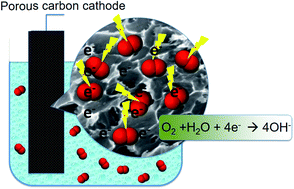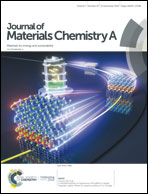Ultramicropore-influenced mechanism of oxygen electroreduction on metal-free carbon catalysts†
Abstract
Two series of microporous carbon catalysts were prepared from ordered mesoporous carbon obtained from sucrose and KIT-6 as a carbon source and template, respectively. To modify surface features, the mother sample carbon was oxidized and then exposed to ammonia at 600, 800 and 950 °C. The latter treatment resulted in an introduction of nitrogen species to the carbons' matrices. The N-modified carbons had almost identical porosities and differed mainly in the content of nitrogen and oxygen on the surface. Moreover, the environment of the nitrogen groups on the surface did not show marked variations. To further modified N-free samples, the oxidized carbons was reduced by heating at 950 °C. Mother carbon, its oxidized and reduced counterparts made a series of N-free samples which differed markedly not only in the porosity but also in the content of oxygen groups. Prepared carbons were tested as ORR electrocatalysts in an alkaline electrolyte. The results indicated N-free carbons as the most efficient ORR catalysts from the views point of the number of electron transfer and kinetic current density (3.98 and 60 mA cm−2, respectively) The superior performance was linked to the high volume of small pores similar in size to the O2 molecule. This pore effect is complex since a strong adsorption of oxygen promoting the reduction process in ultramicropores and the access of electrolyte with dissolved oxygen to these pores are important. Therefore, to account for new factor addressing the effects of these features was proposed. It is referred to as a Pore Influence Factor, PIF, and it combines the number of dissociating groups (affecting hydrophilicity), ECSA and volume of ultramicropores (affecting O2 adsorption). It was established that the number of electrons transfer strongly depends on this factor. A direct dependence of the current density on the volume of micro and ultramicropores was also found for the N-free series of carbons.

- This article is part of the themed collection: 2019 Journal of Materials Chemistry A HOT Papers


 Please wait while we load your content...
Please wait while we load your content...